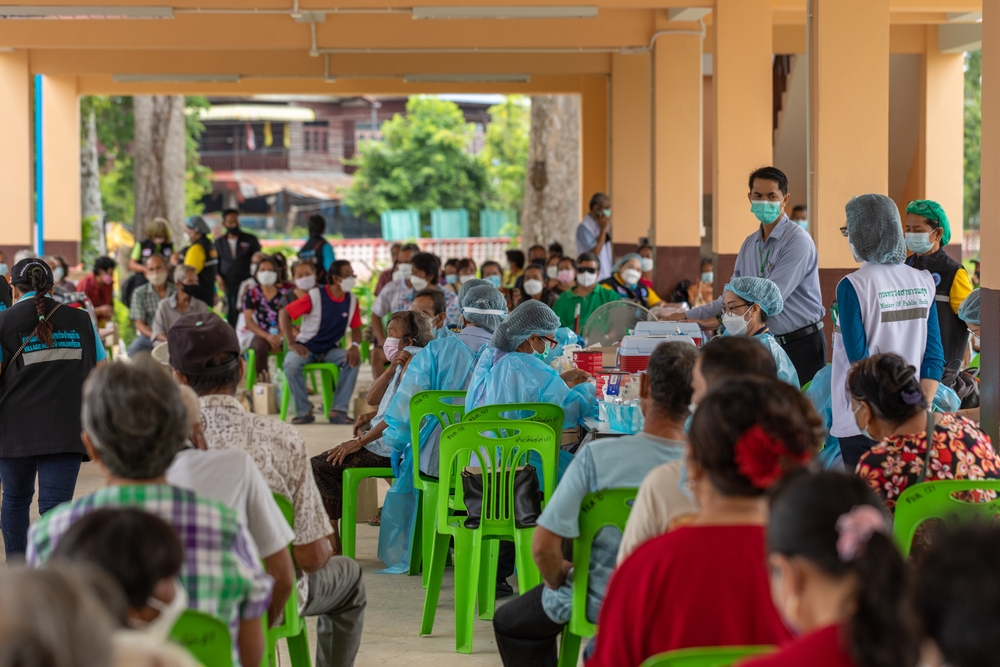In a study on Asia, the incidence of Drug Hypersensitivity Reaction or DHR has been reported to occur in 4.2 per 1,000 hospitalisations in 2020.
What are Drug Allergies?
Drug allergies are undesirable and harmful responses to a drug occurring at doses normally used for therapy. They are immune-mediated – occurring when the body’s natural defences overreact to a medication, mistaking it for a harmful substance, and are generally unpredictable. These reactions are uncommon and mostly non-severe, in rare cases, they can be serious and potentially life-threatening as well.
Drug Allergies VS Side Effects
Side effects are also a form of Adverse Drug Reactions (ADR) which is more frequently encountered in comparison to drug allergies. Similar to drug allergies, they are also unintended effects that manifest at usual therapeutic doses but tend to be more predictable as they are related to the pharmacological properties of the drug. However, not all side effects will cause harm, and some can be beneficial.
Risk Factors for Drug Allergies
The development of an allergic response to a drug cannot be anticipated. But, there are some factors that may increase a person’s chances of getting it.
Drug factors
- Nature of the drug:
Larger drugs and those that are more immunogenic.
- Degree of exposure (dose, duration, frequency):
Frequent or extended use.
- Route of administration
Topical or parenteral routes.
- Cross-sensitisation:
Previous allergy reaction to a similar medication (e.g., close structural chemical relationship)
Host factors
- Age and gender:
Young and those who are middle-aged, as well as females.
- Genetics:
Certain genes (e.g., HLA-B*5801 for allopurinol hypersensitivity)
- Concurrent medical conditions:
Some disease states might induce allergic responses to drugs, such as viral infections like the Human Immunodeficiency Virus (HIV).
- History of a drug reaction:
Patients with a history of drug allergy tend to be more susceptible to developing allergies to new medications.
A rare condition where individuals are prone to react to drugs that may be unrelated/dissimilar.
Classification of Drug Allergies
Drug allergies can be broadly classified into two groups based on the timing of symptom onset.
-
Immediate reaction:
Typically occurs within an hour of the first dose, but can take up to 6 hours to develop with some drugs (e.g., those taken orally and with food). Repeated exposure to the offending agent can sometimes trigger anaphylaxis.
-
Delayed reaction:
Reactions that develop more than an hour after drug administration in a naïve patient. Symptoms usually manifest 6 hours after the medication has been given, although some develop responses following days and weeks of treatment, or even after the drug has been stopped.
Clinical Manifestation of Drug Allergies
-
Immediate drug allergic responses
- Majority exhibit mild to moderate symptoms (e.g., acute onset of localised skin rashes, itching, and hives).
- A minority may experience more serious symptoms (e.g., swelling of the face, throat or mouth, breathing difficulties, or a widespread skin reaction).
- Anaphylaxis is the most severe manifestation, involving multiple organ systems simultaneously (e.g. lungs, skin, heart). It is potentially fatal as it can affect a person’s heart, breathing and blood pressure which can lead to shock and cardiac arrest. Hence, those with anaphylaxis must be treated immediately.
-
Delayed drug allergic responses
- Usually, develop within the skin in the form of rashes or blisters.
- Often accompanied by fever, flu-like, and other systemic symptoms.
- Can result in organ damage and involve large skin areas, causing them to peel off.
- More serious cases may be life-threatening.
- Examples of such cutaneous reactions include:
- Maculopapular drug exanthema
- Drug-induced Hypersensitivity Syndrome (DIHS) OR Drug Rash with Eosinophilia and Systemic Symptoms (DRESS)
- Fixed drug eruption (FDE)
- Acute Generalised Exanthematous Pustulosis (AGEP)
- Generalised Exfoliative Dermatitis (GED)
- Stevens-Johnson Syndrome (SJS) & Toxic Epidermal Necrolysis (TEN)
Common inciting agents include:
Antibiotics, nonsteroidal anti-inflammatory drugs (NSAIDs), biological agents, contrast media, neuromuscular blocking drugs, anticonvulsants, and allopurinol.
Diagnosis of Drug Allergies
A detailed clinical history and examination are usually conducted to find out more about:
- Signs and symptoms
- Circumstances under which the reaction occurred
- Medications and supplements that were taken
- Timeline of consumption of the above products
- Allergy and past medical history
If deemed necessary, allergy tests may also be carried out.
To find out if the immune system has the tendency to overreact to certain chemicals.
Potential allergens are applied onto the forearm, and the skin is gently pricked for the substance to enter the skin.
The appearance of red, or itchy and bumpy rashes at the site of an application indicates a likely allergic reaction.
A patch containing the suspected agent is placed on the skin.
Skin is observed for signs of allergic reactions after the removal of the patch.
To detect antibodies produced in response to a medication.
The likely offending drug is administered in increasing but controlled amounts to monitor for an allergy reaction.
Aids in differentiating between immune and non-immune mediated responses.
Cannot be done for all medications, and under certain circumstances (e.g., previous life-threatening allergy reaction).
- Skin biopsy:
To rule out other skin conditions.
Features of drug allergies may sometimes coincide with that side effects. It is therefore important that an accurate diagnosis is made as being mislabelled can result in patients having to be switched to less effective alternatives. If necessary, a referral to an allergist may be made to obtain a more accurate evaluation.
Management of Drug Allergies
- Termination of drug therapy and future avoidance of the medication
- Substitution with alternative therapeutic options
- Pharmacologic therapy (e.g., antihistamines, steroids, adrenaline)
- Drug desensitisation:
- Employed when there are no other substitutes but a medical need exists for the drug.
- Medication is given slowly in increasing amounts while observing the patient’s reaction and tolerance until the intended therapeutic dose is reached.
- Only useful for medications that need to be taken daily as the effects are temporary, and tolerance diminishes if the medication is stopped.
- The procedure must be repeated if tolerance is lost.
Living with Drug Allergy
Drug allergies can have dire consequences. Individuals with a true drug allergy must be made aware of the medication they are allergic to so that they avoid taking them and can inform their healthcare providers about it.
Finally, anyone can develop a drug allergy. When taking medications, especially new ones, it is essential to watch out for any signs and symptoms of drug allergies and seek medical attention promptly.













